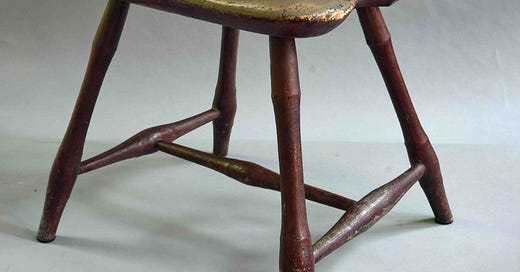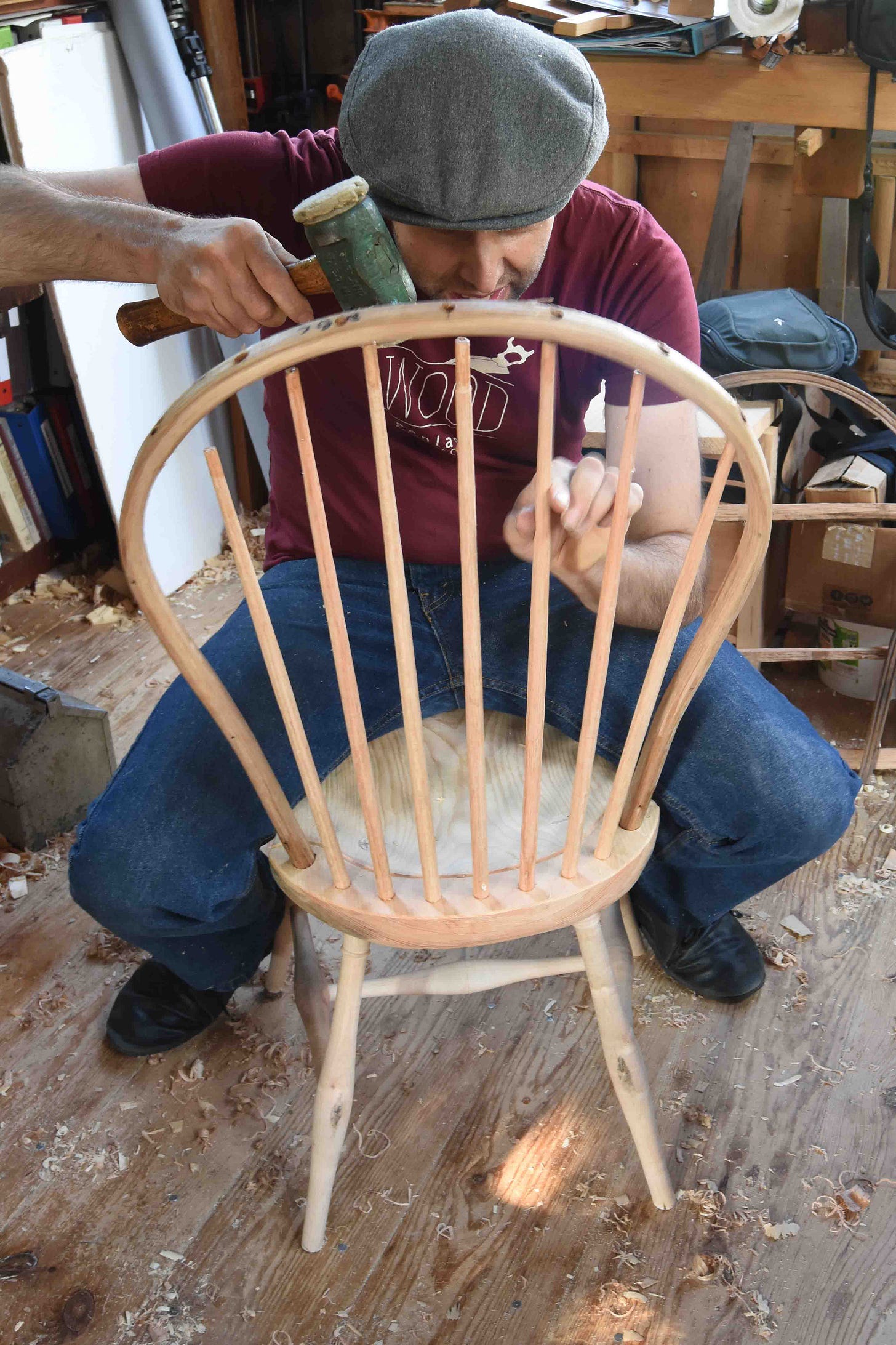[This is a follow-up to the previous post. Elia Bizzarri stopped by here for a few days to bring me up to speed on his research into Cape Cod chairmaker Samuel Wing - see part one here https://peterfollansbeejoinerswork.substack.com/p/learning-new-old-ways ]
The notion of trying to re-create an 18th-century chair is fraught with peril. We all know you can’t recreate the past and no one in their right mind would want to. But the project Elia Bizzarri has undertaken can help us understand some of the possible methods used by WIndsor chairmakers in late 18th/early 19th America.
The chair in the top photo is not one Elia is copying, but it has some similarities to the Samuel Wing chairs he’s studying - most notable is its small size. The seat is smaller than we usually make today - about 16” wide. It came out of an 18th-century house around the corner, not sure if it was made locally or not.
There’s been lots of research about chairmakers in that period; studies of the chairs and documents provide ample evidence. Tool marks on the chairs, the separate parts of un-assembled chairs - broken and disassembled pieces, snippets of documentary records - all these things fascinate me in many ways - and they all give us clues to what was happening in a chair shop at that point. And how things were done in one shop might have very little bearing on how it was done in another. But nothing will ever put us in one of those shops to see the chairmakers at work.
I still think the exercise is well worth it. Important even. One thing we do know is the way we’ve learned to make a Windsor chair in the last 40-50 years is not how the chairs were made in the period. One chair at a time with several test-assemblies can get us to a near-perfect chair - symmetrical angles, joints without gaps. Careful attention to, and manipulation of, the moisture content of various parts are often “standard” methods today. Not always, but then most of the chairmakers I know all descend from one source, hence the common threads.
Last week Elia & I put his chair together with a mixture of the “modern” methods we both learned from Curtis Buchanan and some of the conjectural techniques he’s patching together from his research.
Many of the things we looked at turned out to be ground that Jennie Alexander trod heavily on. JA made all of one Windsor chair and a couple of stools. But she covered a lot of paper with her ideas about how to make the undercarriage and even more about the mortise and tenon used in both the Windsor chair and the post and rung chair.
Keep reading with a 7-day free trial
Subscribe to Follansbee's Substack to keep reading this post and get 7 days of free access to the full post archives.





